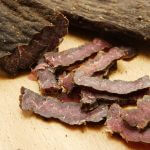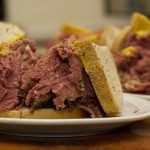
Eating healthy is easier than ever before thanks to the movement towards sustainable foods and processed foods with higher nutrition content. But eating healthy is more than just knowing what to buy. From Cook it meal kits that help you control portions and nutrition to instructional web videos to more entertaining and information television shows, the bottom line is that you need to have a foundation of knowledge to help you make better food decisions.
And there is no place better to find this knowledge than the USDA food pyramid.
The FOOD PYRAMID
The USDA food pyramid suggests that a proper diet should consist of:
- 6 – 11 servings of bread, cereal, pasta, or rice
- 3 – 5 servings of vegetables
- 2 – 4 servings of fruit
- 2 – 3 servings of milk, yogurt, cheese (dairy)
- 2 – 3 servings of poultry, fish, meat, nuts, eggs, beans (protein)
- Sparse servings of fats, oils, refined sugars, etc
In addition, the food pyramid notes calorie limitations based on age or body type or activity level:
- 2,800 calories for teenage boys and active men (some very active women may also need this many calories)
- 2,200 calories for most children, most teenage girls, most active women, and many sedentary men. However, women who may be breastfeeding should consider upping their caloric intake
- 1,600 calories or sedentary women and most older adults
WHAT IS A SERVING?
Serving size varies, of course, based on the food group and it is important to try to eat the appropriate serving size, not just the “number” of servings. According to the USDA, then, “one serving” consists of:
- 1 slice of bread or 1 oz of cereal or ½ cup cooked cereal, rice, or pasta
- 1 cup raw leafy greens or ½ cup other vegetable or ¾ cup vegetable juice
- 1 medium apple, banana, orange, or ½ cup chopped or cooked or canned fruit or ¾ cup fruit juice
- 1 cup milk/yogurt or 1.5 oz natural cheese or 2 oz processed cheese
-
2 – 3 oz cooked lean meat/poultry/fish
- ½ cup dry beans or 1 egg = 1 oz lean meat
- 2T peanut butter or 1/3 cup nuts = 1 oz lean meat
WHAT ABOUT FATS?
The top of the traditional food pyramid talks about the room in your diet for fats, oils, and sugars. Obviously, you should try to eat foods that are low in fat, but there are different types of fat. That said, the USDA recommends that your fat ratio should only be about 30 percent of your daily caloric intake (so, basically, no more than one-third).


















